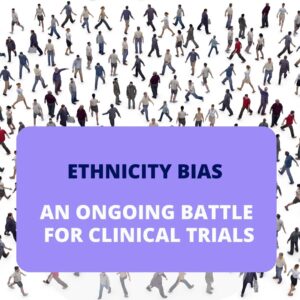One of the fundamental problems inhibiting diversity in clinical research is racial/ethnicity bias in health care. Implicit and racial prejudices affect all medical subspecialties, as do other systemic issues such as institutional racism, patient distrust and a shortage of minority physicians serving marginalised areas.
When compared to the over-representation of white colleagues in clinical trials, different racial and ethnic groups are disproportionately represented. Because race and ethnicity are known to contribute to interindividual variances in drug exposure and response, the risk-benefit ratio in some populations is altered.
Statistics
- Oncology is just the tip of the iceberg when it comes to racial inequity in the healthcare industry. There was a 30% greater risk of death from heart disease in African Americans, but just 2.5% of clinical studies in cardiology involved African Americans (FDA).
- Although African-Amercian men had a 76% higher incidence rate and a 120% higher death rate from prostate cancer than White men, more than 96% of participants in these studies are White.
- Analysis of 20,692 trials (2000-2020) a story of two decades: Only 43% of trials reported data on race or ethnicity.
- According to the epidemiologists at GlobalData, Covid-19 was the leading cause of death among African-Americans in the United States (62 deaths per 100,000 people) and the United Kingdom (41 deaths per 100,000 people) of the black population.
The Reasons For Lack of Diversity
Racially and ethnically diverse populations may face challenges in participating in clinical trials due to a lack of trust in the clinical research system, lack of resources, time and transportation constraints, as well as conflicts with caregivers or family responsibilities that prevent them from participating. Racial and ethnic minorities may be less likely to take part in clinical trials as a result of a variety of factors, including, but not limited to, a lack of familiarity with the clinical trial process, an incomplete understanding of what it entails to be a participant, and cultural, health literacy issues and language barriers.
People of colour may be sceptical about health care because of long-standing socioeconomic inequalities and prejudices. Numerous research abuses, such as the Tuskegee Syphilis Study, Henrietta Lacks and HeLa cells, and radiation studies on prisoners, have left many with significant doubts about the safety, exploitation, and usefulness of research. In the midst of the epidemic, this mistrust of the COVID-19 vaccine is still prevalent, with 30 to 50% of minorities refusing to consider getting vaccinated.
The lack of minority physicians also causes issues, as patients generally prefer to see a doctor with whom they can identify. Despite the fact that there are over 40 million Blacks (13% of the population) in the United States, just 5% of physicians and 2.9% of ophthalmologists are Black—a discrepancy that is even worse for non-White Hispanics.
Lastly, if a physician makes a hasty decision about a patient based on colour, ethnicity, gender, or other demographics and concludes that the patient isn’t an appropriate candidate for a clinical trial, it’s a wasted opportunity to potentially help the patient and advance medical research.
Solutions: How To Address
The FDA recently issued new guidelines to industry sponsors in order to increase the diversity of trial populations, but a comprehensive approach is required to achieve long-term and sustainable change. To achieve greater health equality for all patients, regardless of race, ethnicity, gender, age, or other demographics, physicians and researchers must identify and address clinical research inequalities and racial prejudice.
Researchers, health care professionals, policymakers, and sponsors must all commit to helping ethnic communities regain trust in health care. It is possible to improve minority patient health literacy and emphasise the significance of their participation in clinical trials by utilising AI technology to translate medical terminology into plain language.
Consent forms should be translated into community patients’ native languages and sent home with them for further review (preferably in a digital form). Following that, a follow-up call can address any questions raised by the patient and family prior to the screening appointment.
In order to address implicit bias, sponsors should engage in an “unmet needs” discussion with principal investigators to convey the value of racial and cultural diversity among trial participants. These discussions should draw attention to inequities in illness prevalence, mortality rates, and long-term disability among underrepresented populations. They should also underline that clinical trial recruiting must include individuals who will eventually be treated with the medication if it is approved, and that efficacy and side effects data must include all races and ethnicities.
How Advanced AI Platforms Such As Clinials Can Assist
Clinials advanced platform can help researchers with simple language and translate sophisticated medical terminology into a plain-language summary that the general public can understand. Most importantly, the Clinials platform has the capability to translate English into multiple languages; this capability is a huge benefit for people of other ethnicities who may not speak English as a first language.
Clinials interactive user-friendly dashboard has the ability to showcase the insights, metrics, and forecasts about various demographics such as location, age, gender, ethnicity, etc. This demographic information can be used to identify the diversity among the clinical trials.

